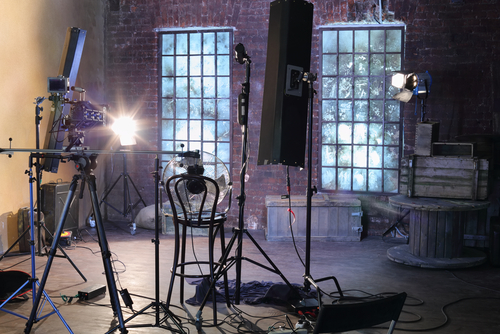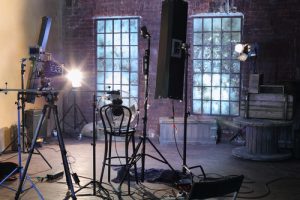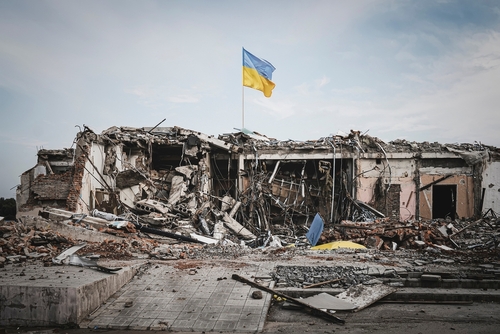


Is it Useful to Work on Sundays?
11 April 2018
Mediation: a Key Tool for Pacification
11 April 2018With support from the Foundation for the Social Sciences, which was created under the aegis of the Fondation de France, Gwenaële Rot, university professor and researcher at the Center for the Sociology of Organizations, is starting a study on the evolution of the profession of production designers, who play a key role in filmmaking. This labor sociologist sees a need to study the changes that digital technology has wrought on this profession’s practice, position and developments.
A movie set is much more than a layout
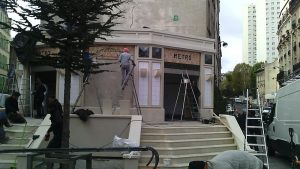
As sociologists Georges Friedmann and Edgar Morin put it in 1952: “The strength of a movie lies in its mix of imagination and reality, in the realism of this fantasy, and in the imaginary aspect of this reality”. A film set, which is part of this “mix”, is therefore much more than a layout. From “natural sets” using urban or rural space to blue background studios that actors perform in before synthetic images are embedded, not to mention “old-fashioned” sets, ways of creating and sustaining film sets vary depending on the stories to tell, the techniques used and the film’s budget.
Be it realistic and/or imaginary, the set shapes those who will inhabit it and cross it over the course of the film’s narrative. Creating a set involves characterizing places in terms of their historical, esthetic and sociological dimensions.
Production designer: a key profession
To create a set, a whole chain of artistic cooperation must fall into place to identify and transform a place into a film set: set researchers (scouts), set workers and technicians (builders, painters, craftsmen, sculptors, plasterers, locksmiths, contractors, props masters, etc.). The production designer, a real master of ceremonies, plays a central role at the heart of this organization, even if during the shoot the chief operator in charge of light also helps shape the set.
The advent of digital technology and special effects
 The use of digital technology is increasingly upending this chain of artistic cooperation, During film shoots, and especially in the post-production phase, other professionals become involved – particularly special effects supervisors; they complete and transform the work around the conception and creation of sets. The development of digital technologies, their perfecting and their falling costs have led to a rethinking of the ways in which sets are created, since most of the set work can now be done after the film is shot. Thus, all the activities linked to the set have profoundly changed and the whole chain of image creation is being recast
The use of digital technology is increasingly upending this chain of artistic cooperation, During film shoots, and especially in the post-production phase, other professionals become involved – particularly special effects supervisors; they complete and transform the work around the conception and creation of sets. The development of digital technologies, their perfecting and their falling costs have led to a rethinking of the ways in which sets are created, since most of the set work can now be done after the film is shot. Thus, all the activities linked to the set have profoundly changed and the whole chain of image creation is being recast
New place, new profession?
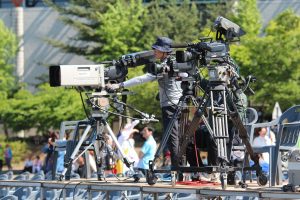 The sociological survey at the heart of this research specifically aims to study the way in which film production designers have repositioned their activity in time, from the preparatory phase to the post-production phase. How do they redefine their way of working? What are the forms of cooperation between the different professionals involved in the creation of a film set? To what extent does the digital processing of images in the post-production phase affect the selection of filming locations, the conception of the set and cinematographic staging methods?
The sociological survey at the heart of this research specifically aims to study the way in which film production designers have repositioned their activity in time, from the preparatory phase to the post-production phase. How do they redefine their way of working? What are the forms of cooperation between the different professionals involved in the creation of a film set? To what extent does the digital processing of images in the post-production phase affect the selection of filming locations, the conception of the set and cinematographic staging methods?
An in-depth field study
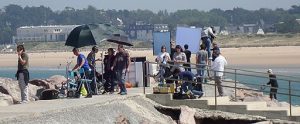 To answer these questions many qualitative interviews will be conducted with various professionals: production designers, scouts, chief operators, special effects supervisors and producers. This survey will also be linked to an observation of different workspaces: preparation offices, digital image processing computer rooms and natural and studio film sets.
To answer these questions many qualitative interviews will be conducted with various professionals: production designers, scouts, chief operators, special effects supervisors and producers. This survey will also be linked to an observation of different workspaces: preparation offices, digital image processing computer rooms and natural and studio film sets.
Evolutions and continuities
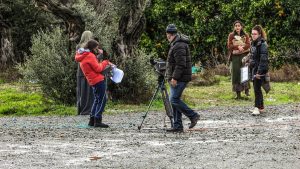 The final question will be to ask whether these evolutions are akin to an operation wherein one trade replaces another. Is this a turning point where the post-production phase overtakes the preparation for films and shoots? Might it be that in the same way that chief operators are sometimes called upon to do light in an animation film, production designers will also have a role to play in determining the artistic orientations of sets? Will the growing importance of digital technology enable a loosening of the material hold on “real” places involved in most shoots?
The final question will be to ask whether these evolutions are akin to an operation wherein one trade replaces another. Is this a turning point where the post-production phase overtakes the preparation for films and shoots? Might it be that in the same way that chief operators are sometimes called upon to do light in an animation film, production designers will also have a role to play in determining the artistic orientations of sets? Will the growing importance of digital technology enable a loosening of the material hold on “real” places involved in most shoots?
Finally, in the context of a major reconfiguration of techniques and professional boundaries, we will explore the essentiality of matter and concrete space, which we believe will remain crucial resources in cinematographic creation.
* This research is part of a broader research program on film professions and filming spaces.

